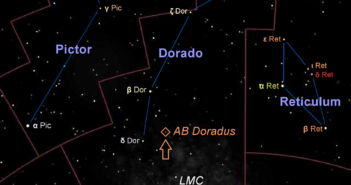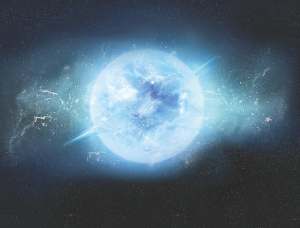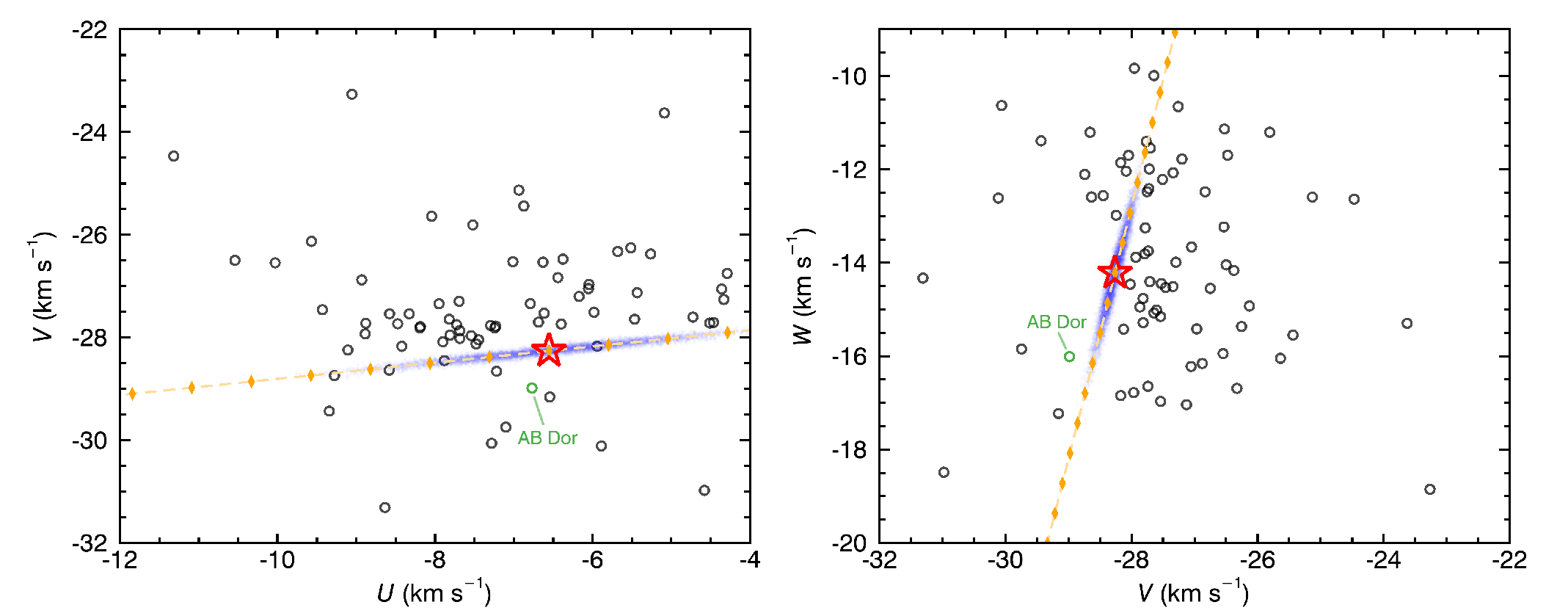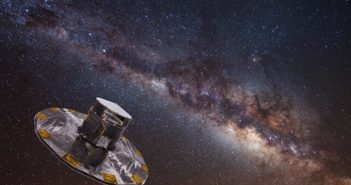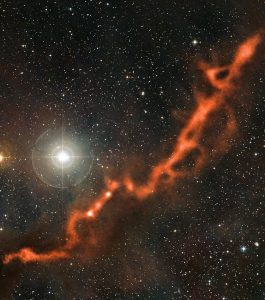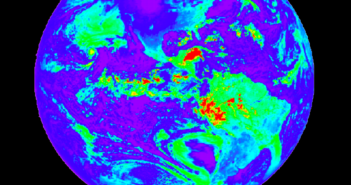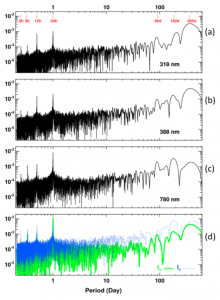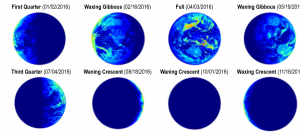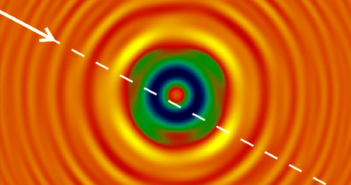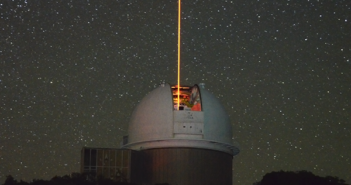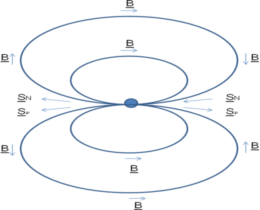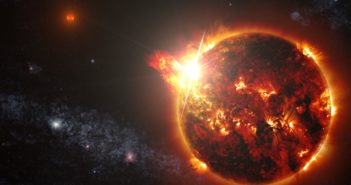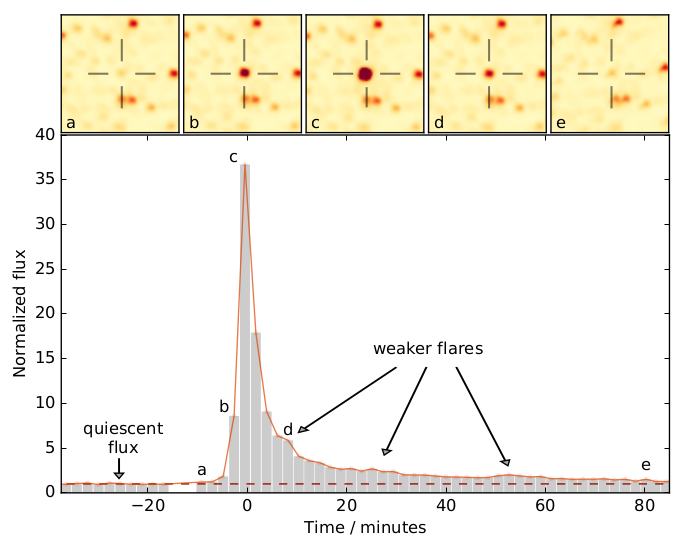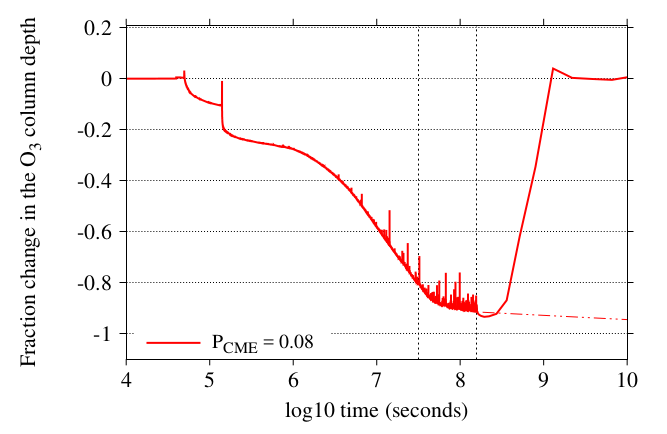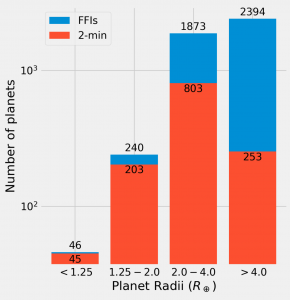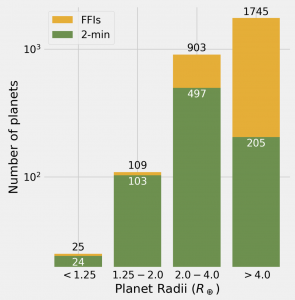
A Very Close Planet That Is Way Out of Line
Editor’s note: Astrobites is a graduate-student-run organization that digests astrophysical literature for undergraduate students. As part of the partnership between the AAS and astrobites, we occasionally repost astrobites content here at AAS Nova. We hope you enjoy this post from astrobites; the original can be viewed at astrobites.org!
Title: A Compact Multi-Planet System With A Significantly Misaligned Ultra Short Period Planet
Authors: Joseph E. Rodriguez et al.
First Author’s Institution: Harvard-Smithsonian Center for Astrophysics
Status: Submitted to the AAS Journals
Our solar system is flat: all the planets orbit in the same plane as the Sun’s equator, at 90 degrees to its pole, with low orbital inclination relative to each other. While distant exoplanets can orbit at any inclination relative to the plane of the sky, the exoplanets that we detect via transits nearly always have inclination values very close to 90° — i.e, they orbit perpendicular to the plane of the sky. This is what allows us to see them passing in front of their star.
However, the authors of today’s paper have discovered a transiting exoplanet with an inclination of 76.5°. This is possible because EPIC248435473 b is an ultra short period planet (USP) with a period of just 0.66 days, meaning from our viewpoint the planet still transits in front of its star in spite of its larger inclination angle. What makes this discovery more interesting is that the authors have found up to five other transiting planets in this system, all aligned with inclinations 88-90°, making EPIC248435473 b the odd one out.
Discovering and Modeling the Planets
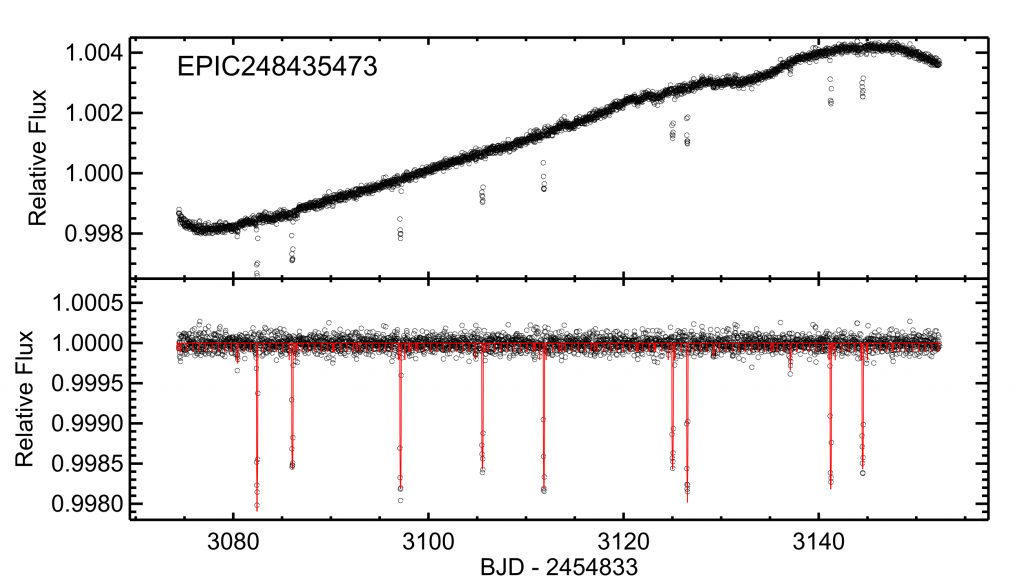
Figure 1: The full K2 light curve of EPIC248435473 from Campaign 14. Top: light curve corrected for systematics. Bottom: flattened light curve with best fit model from EXOFASTv2 showing modeled transits of its planets. [Rodriguez et al. 2018]
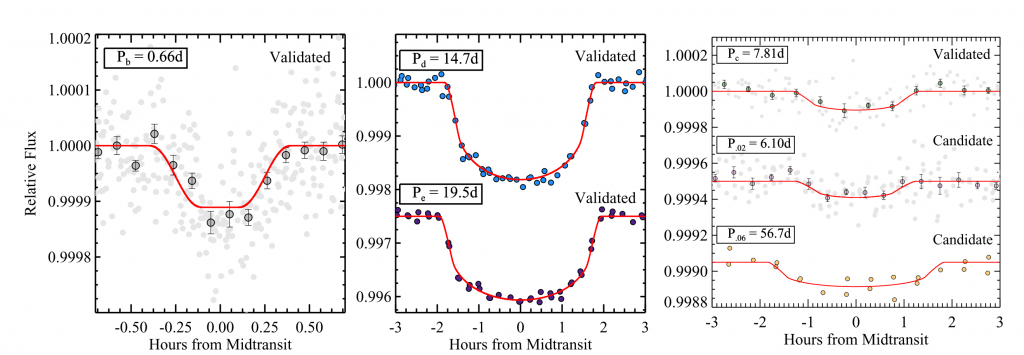
Figure 2: Phase folded light curves for validated planets: b,c,d,e and candidate planets .02 and .06. All the repeating transit data from K2 is folded onto each planet’s period, combining into one transit to show the best period and quality of fit of the EXOFASTv2 model (shown by the red line). [Rodriguez et al. 2018]
Modeling planet b was made tricker as it has a grazing transit — only part of the planet passes in front of the stellar disk — resulting in the V shape transit in Figure 2. In this case, the transit data cannot constrain the planetary radius well. As an approximation, the planetary mass found using RVs can be used to estimate the planet radius. Unfortunately the RV data is not precise enough to constrain the mass (see Figure 3), so only an upper limit is found. Using Chen and Kipping’s exoplanet mass–radius relation results in a wide possible radius distribution between 1–10 Earth radii, shown in Figure 4, with the radius most likely about 3 Earth radii.

Figure 3: Radial-velocity data folded on planet b’s period. RV data is not precise enough to measure the planet mass, as RV error bars are quite large compared to the RV signal. Therefore only an upper limit on mass can be found. [Rodriguez et al. 2018]
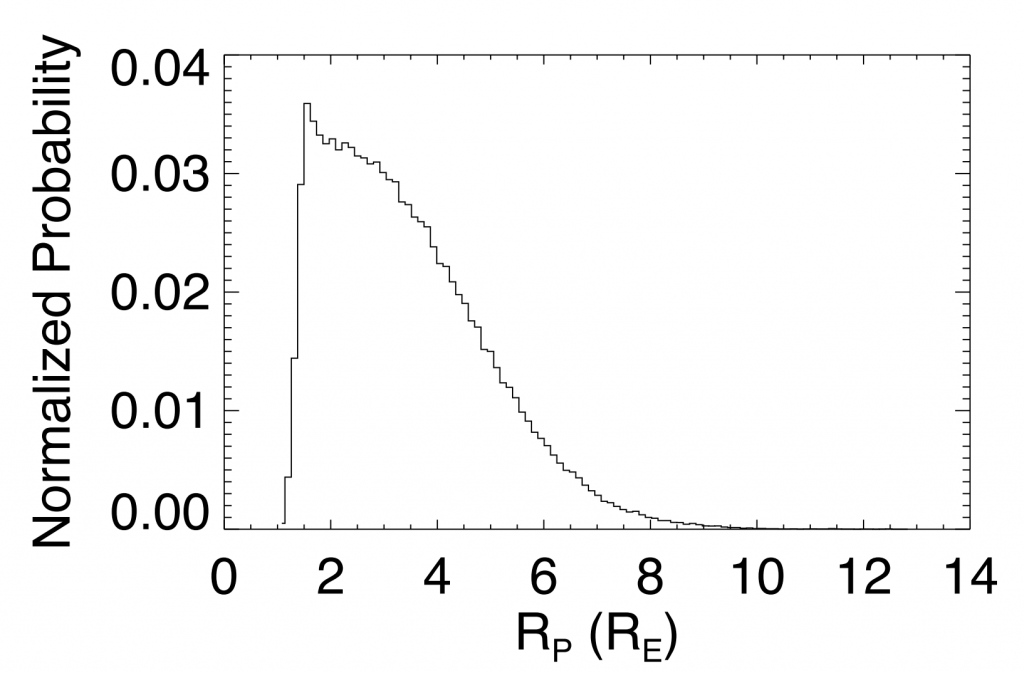
Figure 4: Probability of planet b having different radii. Transit depth sets a lower limit of 1 Earth radius while an upper mass limit comes from the non-detection of RV signal which is converted to a radius. [Rodriguez et al. 2018]
A Misaligned Planet in a Multi-Planet System
Explaining how EPIC248435473 b entered its short misaligned orbit is an open question. Theorists do not believe it could have formed so close to its star; they argue it must instead have moved in from further away in the system.
Proto-USP planets have been proposed to start in periods of 5–10 days before being gravitationally tugged into eccentric and inclined orbits by other planets. These orbits later circularize at the point closest to the star, but the planets stay inclined. However, this planet’s radius of 3 Earth radii, if confirmed, is larger than other USP planets and implies a dense and water-rich atmosphere that must have formed much further away from the star to resist the strong photoevaporation.
Additional complications arise as EPIC248435473 b is in a compact system. Generally, the planets moved into ultrashort period orbits by the mechanism described above would only have companions with periods of 10 days or more. Planet c and candidate .02 are closer, with periods of 6 and 7 days, so they must have migrated inwards after the USP planet reached its present location.
Further observations to constrain the mass and radius of EPIC248435473 b, as well as study of its atmosphere, may help narrow down its formation history. The planet bulk density and atmospheric constraints on water could help restrict its origin within the disk and determine when it reached its current location. This information should help explain how this strange system came to exist.
About the author, Emma Foxell:
I am a PhD student at the University of Warwick. My project involves searching for transiting exoplanets around bright stars using telescopes on the ground. Outside of astronomy, I enjoy rock climbing and hiking.

